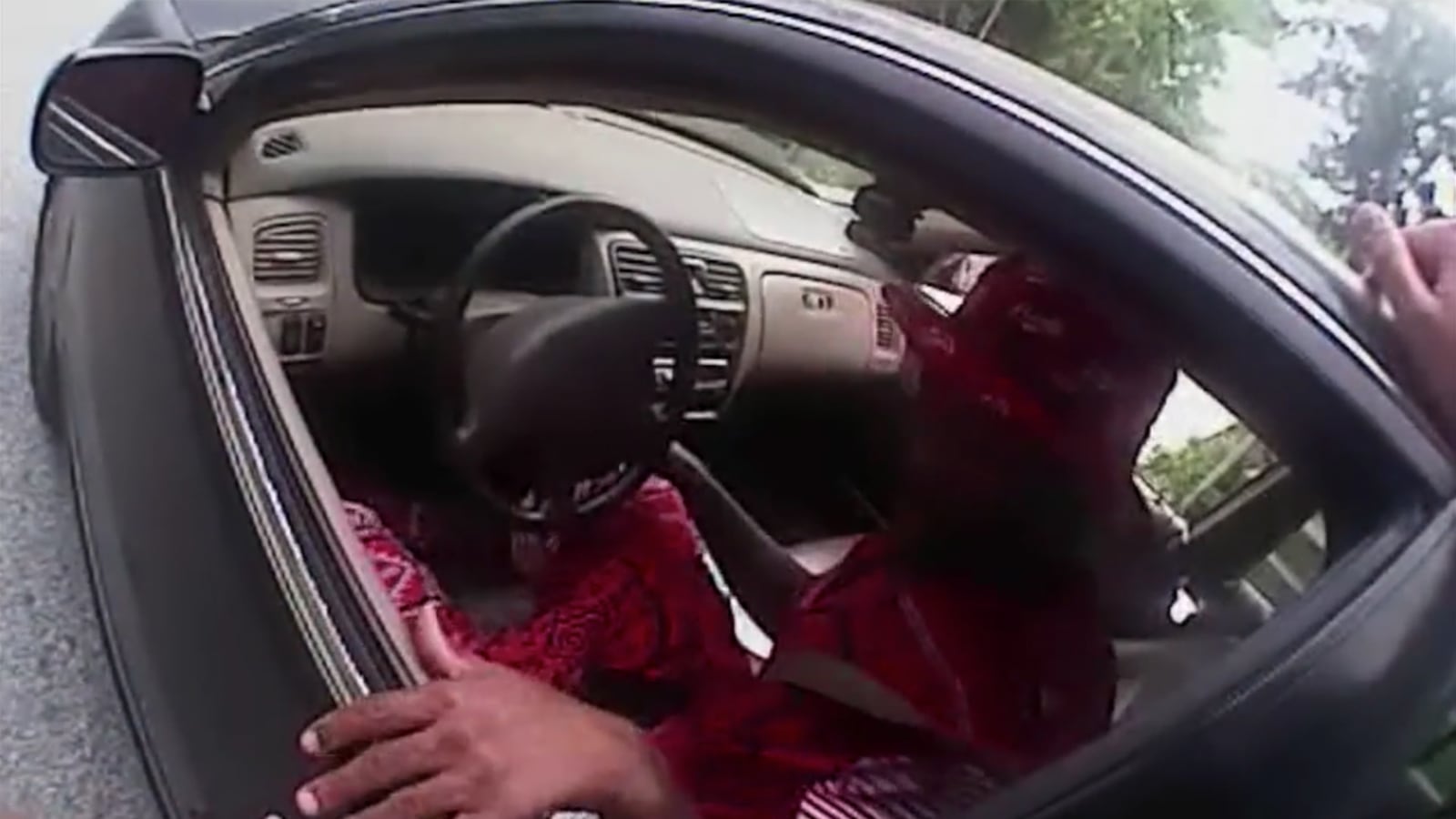CINCINNATI — Ripping through crime scene tape and walking toward 113 Gage Street late Wednesday night, a man sought answers for his brother’s death.
“I need to see my little brother,” he said as a friend held him back from police officers at the edge of the driveway.
The man’s brother, 34-year-old Donielle Kelly, was dead. And the only sight of him came when his body was hauled out on a stretcher, covered by a white sheet.
About a half-block away the memorial for Sam DuBose, killed by a University of Cincinnati police officer on July 19, glowed under a streetlight.
“My motherfucking people just got murdered right around the motherfucking corner!” Kelly’s brother said. He was referring to DuBose, whose killer, Ray Tensing, was indicted Wednesday for murder.
The cops didn’t respond to Kelly’s brother—distraught, manic, and in deep pain. They just went about their business investigating the city’s 43rd homicide this year. Kelly was screaming for his wife to call the police when he was gunned down in the front yard of his apartment building.
Before Kelly’s death and another late-night shooting, Cincinnati was largely peaceful, bucking what many thought would be widespread unrest after body camera footage showing DuBose’s death was released. It could have been the rapid indictment of Tensing, or prosecutor Joe Deters’s harsh words for the officer and his superiors at the University of Cincinnati Police Department, that prompted the calm. Whatever it was, the citywide serenity didn’t make its way down Gage Street, or into the patch of grass where Kelly spent his last living minutes.
Cincinnati police Sergeant Mike Miller said the homicide had nothing to do with DuBose’s memorial just down the street, or any gathering nearby. “An isolated incident,” he reported to local TV cameras as sweat dripped from his forehead in the muggy night.
That the murder occurred near where DuBose was killed was only a coincidence, Miller said—a horrific one for Kelly’s brother, who rushed past reporters, through yellow plastic tape and toward police in white hats saying he didn’t care if he got Maced.
“I need to see my little brother.”
Shootings aren’t regular in this area, said a married couple who has lived in the neighborhood for 13 years. Scott and Kim, who didn’t want to give their last names, said gunshots aren’t the norm, but when they do occur the University of Cincinnati police isn’t responding.
“They’re not around here like that,” Scott said.
That’s why it came a shock when Kim learned of DuBose’s death just down the street from the home she shares with her husband.
This isn’t the university’s jurisdiction, Kim said, which has caused speculation in the neighborhood as to why DuBose was pulled over in the first place.
“It’s racial profiling,” according to Scott. “Like Deters said, ‘You shouldn’t die because you don’t have a front license plate.’”
The telephone pole at Rice and Valencia where DuBose’s car came to rest after he was shot in the head by Tensing is decorated in the slain man’s honor. A sign taped to the pole reads “MEDIA LIES.”
The role of the media—of both the social and traditional varieties—is an important one here, as with all cases where unarmed black men are killed by police officers. Pressure from reporters and activists alike may have played a role in Deters’s decision to press hard for charges against Tensing. But even after the indictment came down, some remained unhappy with the way in which DuBose was depicted in the press.
Alissa Snoddy, a 21-year-old University of Cincinnati student, sat in a prayer circle earlier Wednesday night and expressed her disdain for media outlets that she said painted DuBose as an outlaw.
“Every time something happens like this they want to depict them as a criminal,” Snoddy said of those who die in police custody and the inevitable arrest records search that follows. For the record, DuBose had been arrested 60 times over the years.
“Do you guys realize that in the media the only picture they’ve shown until recently of Samuel DuBose was his mugshot?” Snoddy added.
The circle was comprised of about 50 students and activists, sitting under strings of white lights while classical music played. At one point, Cincinnati Chief of Police Jeff Blackwell spoke to the gathering, assuring them that his department will “not police in an unconstitutional fashion.”
“Even when we make mistakes, we will tell the truth,” Blackwell said. “And I know for a fact that you will allow us to make mistakes, because you believe in us, and we have a relationship.”
When police departments have a good relationship with the community, errors are forgiven, Blackwell said.
“Because you know that it was a mistake of the mind and not of the heart.”
Not so for Ray Tensing.
“We saw today on that video a mistake of the heart,” Blackwell said.
The second count of Tensing’s indictment claims the officer was “under the influence of sudden passion or in a sudden fit of rage” when he killed DuBose, who was preparing to drive away when he was shot.
Following his remarks to the crowd, Blackwell said that Tensing’s use of lethal force was beyond what police officers are allowed to do by law.
“You can never use deadly force on an unarmed fleeing felon,” Blackwell told The Daily Beast. “This wasn’t even an unarmed fleeing felon. This was an unarmed fleeing no-front-tag.”
And because of that, according to Deter, Blackwell, and thousands of protesters and activists in Cincinnati and across the country, Tensing committed murder, an act that went “against the peace and dignity of the State of Ohio,” according to his indictment.
As the peace circle turned into a march, led and followed by Cincinnati police officers, cops across town were responding to a shooting—that victim a teenage boy. The marchers ended their walk at a campus coffee house. Many said they felt justice had been served. There was an overall sense of righteousness. Smiles and hugs abounded.
An hour and a half later, Donielle Kelly’s brother was hugging his friend, crying as he was held back from the police.
“No! No! No!” he screamed.





